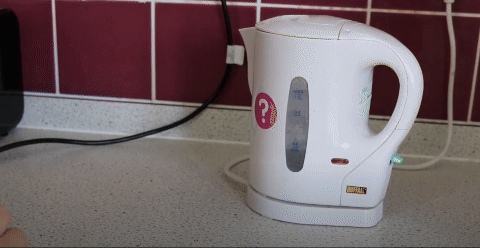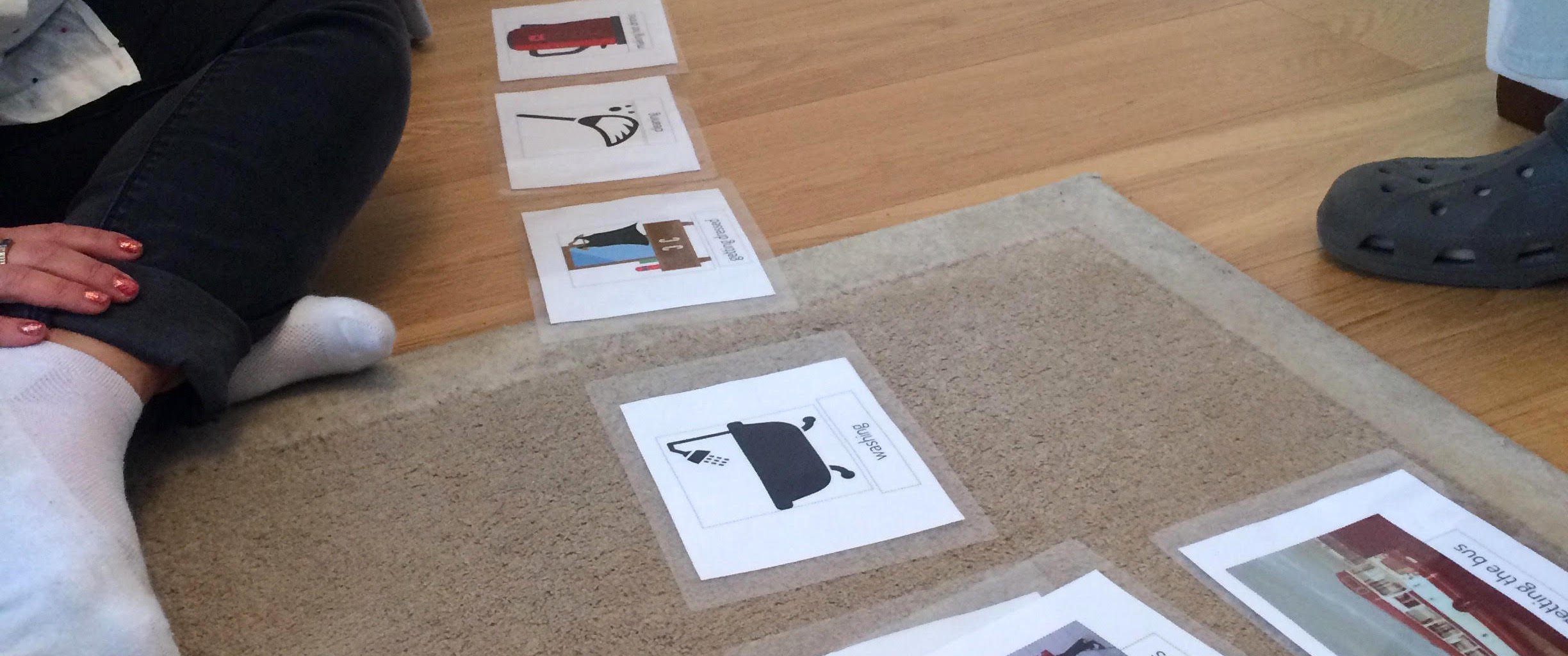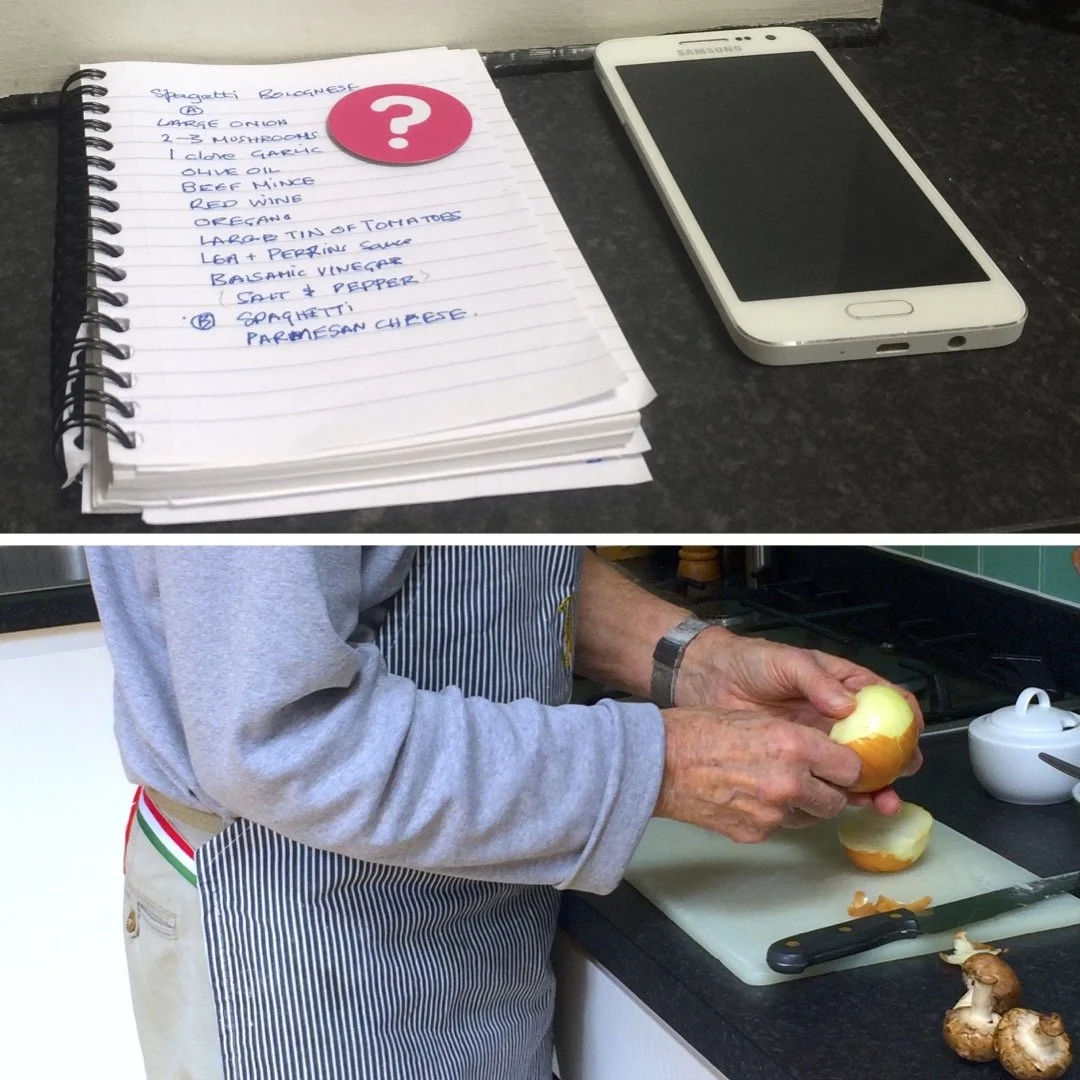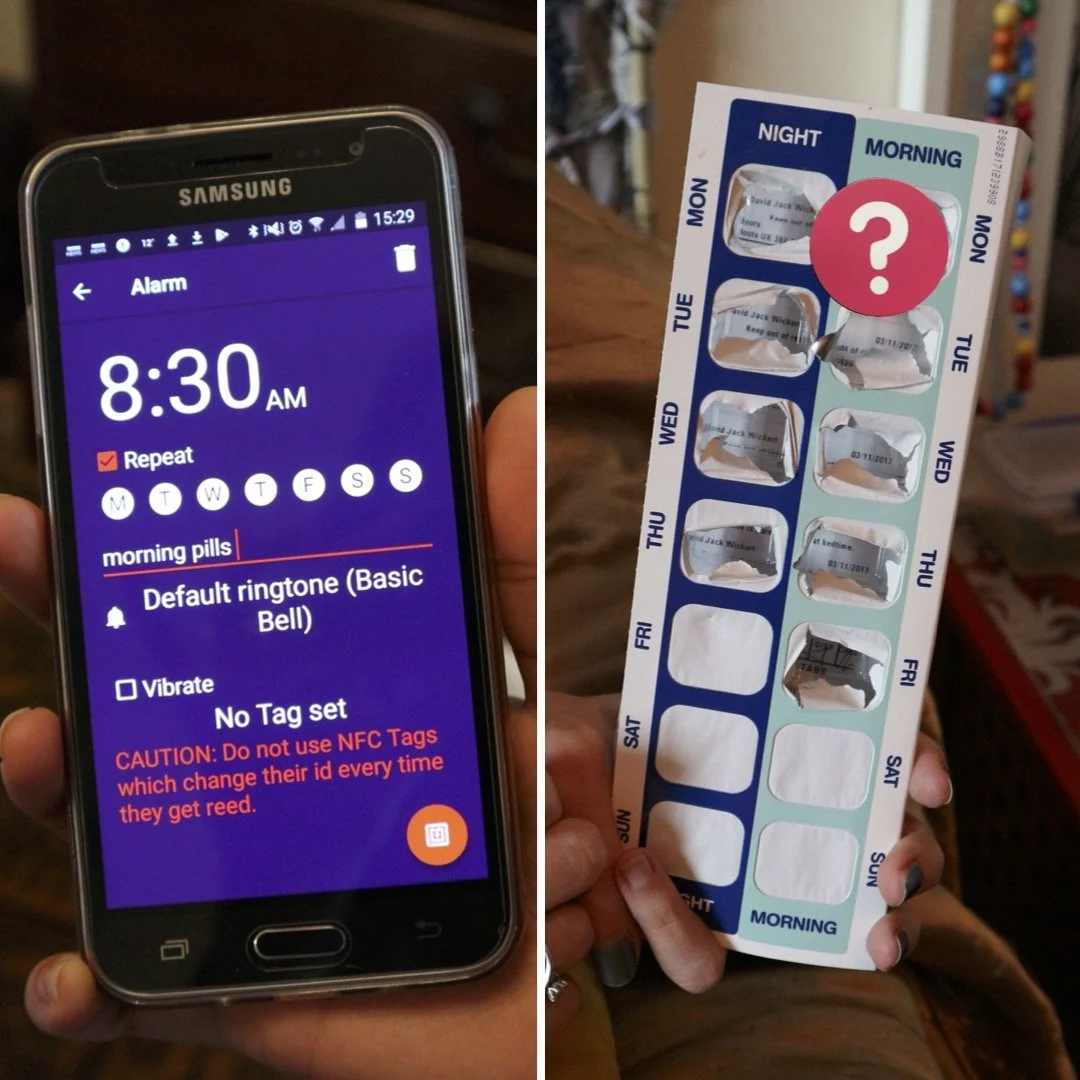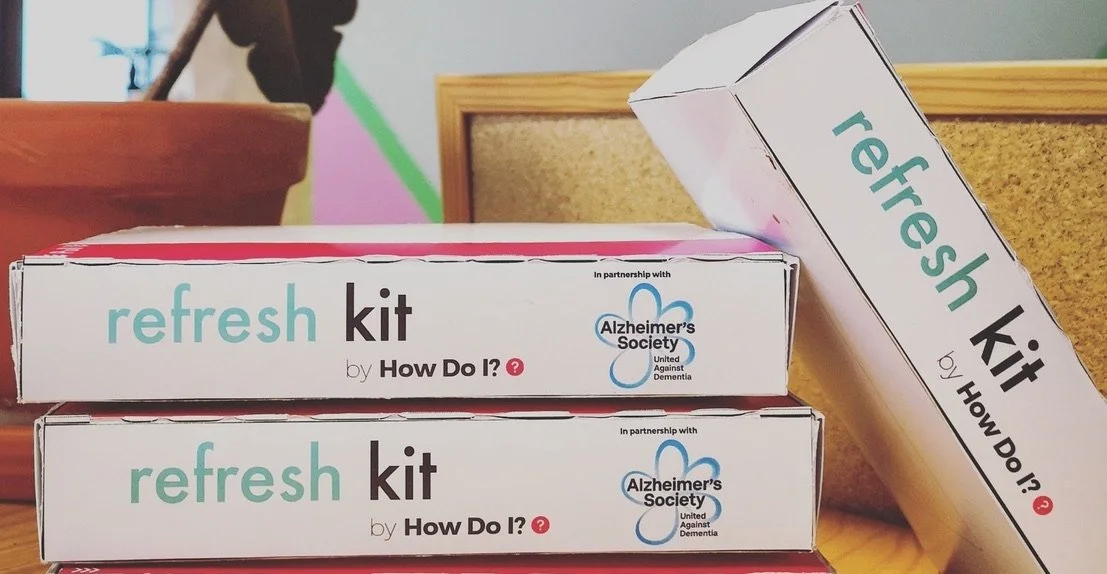How Do I? | Designing with and for people with dementia to support independent living
In this award-winning project, Humanly worked with social enterprise How Do I? to explore how technology might support people living with dementia to live independently for longer.
In 2017 How Do I? was awarded funding by Innovate UK to explore whether their existing solution - designed to help people with learning disabilities to learn life skills - could also help people living with dementia to retain skills.
The original product used near-field communication (NFC) stickers on everyday objects to trigger video tutorials. For example, tapping a phone on a sticker attached to a kettle would play a video on how to make a cup of tea.
To explore the transferability of this technology, Humanly led the team through a human-centred design process over 6 months, starting with exploratory research before moving into ideation, prototyping and testing.
The Process
Framing the challenge
How might we enable people living with dementia to live independently for longer?
Rather than diving into testing the existing product with people living with dementia, Humanly began by working with the team to define the problem we were trying to solve and the outcomes we wanted to achieve.
Though we were interested in how technology could play a role, keeping the challenge broad at this stage helped keep the team open to other opportunities.
Research
To gain a deep understanding of the goals, behaviours and problems experienced by people living with dementia and their carers, Humanly began with careful, ethnographic research.
This included spending time with people living with dementia, their carers and staff members in the community, for example at dementia cafes, day services, and dance groups. This enabled us to meet people and have informal conversations, before arranging more in-depth interviews in people’s own homes.
When visiting people at home, we asked them to show us how dementia affects their daily lives and the tools or ‘hacks’ they use to make things easier. This was combined with creative research activities such as card sorting to explore which everyday tasks people found easier or more difficult.
This was combined with interviews with doctors and dementia experts; desk research into existing solutions designed to support people living with dementia; and engaging with online dementia communities to broaden our reach.
Through our research, we discovered how varied the experience of dementia and daily life can be. We uncovered a number of valuable insights including what was to become a key principle in the project: design for one.
Example: A person living with dementia shares strategies she has developed to maintain her independence. For example, ready meals with numbers handwritten on them by her daughter so she knows what order to eat them in.
Ideation
Common design practice is to design for a group of people, not one. However, as everyone’s experience of dementia is so different, including what helps or hinders, we found that designing for ‘people living with dementia’ didn’t make sense. So we broke with convention and decided to initially design for one person living with dementia, taking into account their individual experiences, challenges and strengths, then explore the wider applicability of those designs later on.
We also avoided designing for constructed personas, because we had built relationships with individuals living with dementia who were willing to work with us throughout the design process. Working with them and their carers, families and pets gave us much deeper insight into what might work, or not work, in practice for them.
This led to six concepts being developed, addressing themes as varied as finding belongings, remembering to do tasks, night terrors, and support with cooking.
Prototyping
To shortlist concepts for prototyping, the team considered the personal value for the participants who had volunteered to take part in prototyping, as well as potential usefulness for other people living with dementia - how easily might it be replicated or adapted to support others?
This included presenting sketches of the ideas, and how we would prototype them, to our prototyping participants for feedback and input. Together we selected three concepts to test:
Video Calendar
A wall calendar with NFC stickers linked to each date, providing opportunities to structure time and capture memories. Videos can be assigned to a past or future date on the calendar, and play automatically when the user taps their phone on a specific date.
Video Cookbook
A personalised, step-by-step recipe guide. In this case, video instructions to support our prototyping participant to cook his favourite dish, spaghetti bolognese.
Video Reminders
Personalised video reminders which play at a scheduled time and only stop when the linked NFC sticker is tapped. For example, a medication reminder could direct the user to their medication, provide instructions for taking this, and remind them to tap the phone on the sticker attached to their medicine box once they’re done to stop the alarm.
Humanly worked with developer BAM Mobile to create prototypes of these concepts, which were tested by participants living with dementia, and their carers, in their own homes. After a week of testing, we visited participants to hear and see how effective the prototypes were in supporting their independence goals.
The Outcomes
The prototypes showed video to be a useful, engaging way of supporting independence. Prototypes were found to rekindle memories, boost confidence and reduce stress.
The video calendar and video cookbook prototypes were particularly successful.
The video calendar created an ‘excuse’ for people living with dementia and their loved ones to create and watch back videos - which, amazingly, were found to rekindle memories.
‘Little did we know that we’d have so much fun recording daily videos. It brought us closer as a couple facing the constant and unpredictable changes of Alzheimer’s. While making these videos and using the stickers to relive the recent past, we were reminded of how we can find hope in the mundane, through the cracks of everyday ups and downs. Thank you!’
- Partner and carer
The video cookbook was ‘useful’ and ‘calming’ for the testing participant and his partner, who found it to boost confidence and reduce stress while cooking. As the NFC sticker that triggered the video instructions was attached to their existing, handwritten recipe, it fit in naturally with their routine.
‘In the past when I’ve seen him cooking, he’s standing there thinking “what do I do next?” or “where is that kept?”. This solves those little problems and enables him to go through with the task.’
- Partner and carer
‘Now I’ve got that, I’ll optimise how much I use it. I just think it’s such a smart idea. So terrific.’
- Person living with dementia
A unique offer was developed for people living with dementia, while utilising How Do I?’s existing core features of video content and NFC stickers.
The resulting product, Refresh, combined the learning from all our prototyping by enabling people to create their own video content with bespoke, flexible uses.
The Impact
The resulting product won prestigious awards and funding from the Alzheimer’s Society, the Smart Ageing Prize and Challenge Dementia.
This enabled How Do I? to develop the Refresh product further, and integrate the required functionality into the existing platform.
To maximise the project impact, all of the insights and ideas generated have been made open source.
This includes ideas and prototypes that were not taken any further within this project, which we encourage anyone inspired by our work to take up for further testing and development.
Six key principles for designing with and for people living with dementia have been developed, based on our learning and validated by experts.
These include the need for variety or flexibility, focusing on positives, and building slowness into design solutions. Feedback from experts in working with people living with dementia indicates that these principles are potentially widely transferable to other projects and contexts.
Moreover, we have shared how we’ve adapted our practices to involve people living with dementia in ways that are enjoyable and empowering.
This ranges from approaches to gaining meaningful, ongoing consent; avoiding assumptions and tailoring activities to the abilities and preferences of individual participants; and meaningfully thanking people living with dementia and their families for their involvement.
‘When you work with Humanly, you’re not only going to be delivered top-quality design work - watching the way they engaged in the human-centred design process provided many learning opportunities for me as a client along the way. Jenni and co. generously took the time to explain each stage of the work to me, which upskilled me and gave me a better understanding of the process. This was more than just an added bonus – it meant that I was more confident in discussing the project with our grant monitoring officer and other relevant stakeholders.
Throughout, Humanly worked with a high degree of flexibility to meet our needs. They were committed to the project, in constant communication, and transparent about all aspects of the project delivery. Their reporting was not only timely and thorough, but creative and visually engaging.
The resultant work was lauded by our funders - but more importantly, will have a positive impact on the lives of people living with dementia, and provide insight for anyone seeking to design products and services with them in mind.
Genuinely – Humanly go above and beyond, and anyone would be fortunate to have them on board a project. I would highly recommend them, and hope to work with them again in future.’
Taryl Law - Co-Founder of How Do I?



